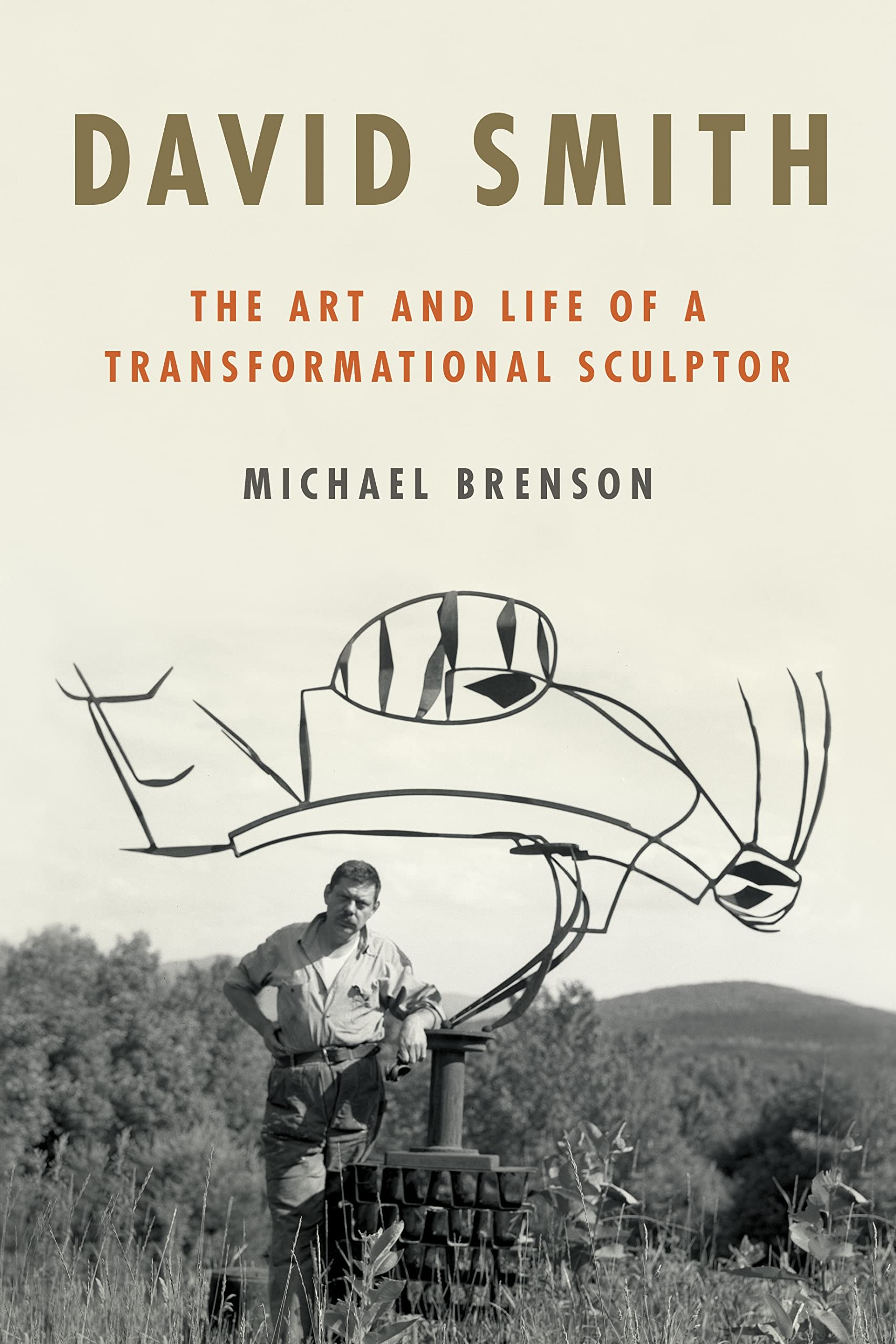
Christopher Lyon

David Smith with Hudson River Landscape, 1951, photographed outside his workshop at Bolton Landing, New York, c. 1951. Photo: The Estate of David Smith, New York. © 2022 The Estate of David Smith / Licensed by VAGA at Artists Rights Society (ARS), NY. Michael Brenson’s David Smith: The Art and Life of a Transformational Sculptor, the first biography of the celebrated twentieth century artist, was published by Farrar, Straus and Giroux this week. Brenson contributed the lead essay to David Smith Sculpture: A Catalogue Raisonné, 1932–1965, published last year by The Estate of David Smith and Yale University Press. In the sensual Costume Institute catalogue CHINA THROUGH THE LOOKING GLASS: FASHION, FILM, ART (Metropolitan Museum of Art/Yale University Press, $45), Met curator Andrew Bolton proposes, with a nervous nod to Edward Said, a “rethinking” of Orientalism as “an appreciative cultural response by the West to its encounters with the East.” Bolton’s depoliticized take on the exchange between East and West in his introduction sets the tone for a volume that is an exuberant triumph of style over substance, complete with a red, silklike cloth cover stamped with gold foil. Inside, elaborate Western couture, art, and films spanning several centuries To call Jules Feiffer an artist, or, worse yet, a cartoonist, diminishes his restless talent: He was a playwright, a screenwriter, an acerbic social commentator, and the illustrator of a beloved children’s book, The Phantom Tollbooth. OUT OF LINE: THE ART OF JULES FEIFFER (Abrams, $40) walks us through the career of this child of the Bronx, an apprentice to the legendary Will Eisner (the creator of The Spirit series, on which Feiffer worked) and the man whose Village Voice cartoons were for decades a reason to put up with the paper. This book was so long in the making VIVIAN MAIER: A PHOTOGRAPHER FOUND (Harper Design, $80) shifts the focus from the faux-romantic idea of Maier as an eccentric recluse (à la Henry Darger) who hoarded never-displayed photographs until she died a pauper’s death and was granted sudden and improbable posthumous stardom. Instead, we see a surprisingly savvy street photographer, who, like Garry Winogrand, Diane Arbus, and Lee Friedlander, honed her vision in 1950s New York. From the late ’50s on, in the guise of a socially invisible Chicagoland nanny, she created thousands of remarkable photographs, devoting her skills to unsentimental images of children and “women of a certain On a steamy Friday afternoon that felt more like late July than mid-September, I headed to the annual New York Art Book Fair at MoMA PS1, aiming to learn more about the state of independent art publishing. Run by Printed Matter, the nonprofit organization that promotes artists’ books with evangelical zeal, the fair is now in its tenth incarnation, and included, among more than three hundred and fifty participants, art-book publishers from twenty-eight countries. Finding them was the challenge. With a floor plan in one hand (isn’t there an app for this?) and the miniature telephone book listing exhibitors in the The seductive cover of JEFF KOONS: A RETROSPECTIVE (Whitney Museum/Yale, $65) is a printing tour de force: no title, just an embossed rendition of the 1991 polychromed wood sculpture Large Vase of Flowers. Open petals reveal what appear to be the tops of enticing (yet unsavory) muffins, simultaneously erotic and excremental. Koons himself describes the flowers as “very sexual and fertile,” adding, “at the same time they are 140 assholes.” The work is like a dirty joke on Georgia O’Keeffe. Demonstrating Koons’s deft employment of technically demanding, impersonal manufacturing processes, the cover was printed on a cast, coated sheet, using A single word may send a reader—or viewer—down the wrong path. On the cover of ALIBIS: SIGMAR POLKE 1963–2010 (Museum of Modern Art, $75), the title appears against a close-up of snakeskin—printed on boards embossed with a scaly texture—framing a photo of the artist as a child manipulating a marionette. In the book’s lead essay, curator Kathy Halbreich proposes that Polke studiously avoided any signature style or medium, “so that his aesthetic method . . . enacted the role of an alibi.” But alibis brings to mind excuses, and the book takes a historically constrained viewpoint—the text is full of Few contemporary artists meaningfully engage with poetry in their work. When they do—whether it is Anselm Kiefer enlisting Paul Celan, or Nancy Spero ventriloquizing Artaud—they tend to prefer their poets dead. It is all the more remarkable, then, that the painter and collage artist Jess (1923–2004) and his partner of nearly forty years, poet Robert Duncan (1919–1988), collaborated frequently and made each other’s ideas fundamental to their art. Duncan and Jess attracted a diverse group of Bay Area artists and poets, and this milieu is the subject of An Opening of the Field: Jess, Robert Duncan, and Their Circle (Pomegranate, Art Spiegelman’s CO-MIX: A RETROSPECTIVE OF COMICS, GRAPHICS, AND SCRAPS (Drawn & Quarterly, $40) reveals the busy creative mind behind Maus, Spiegelman’s masterstroke, completed in 1991, in which he used the despised, adolescent, “Jewish” entertainment of the comic strip to explore his relationship with his parents and their experience of the Holocaust. Co-Mix echoes that strategy, performing the jujitsu flip of mimicking a high-art exhibition catalogue in the quintessential low-art medium of comics. Compulsively self-reflexive, the book convincingly makes the case for comics as the ultimate postmodern art form. With a smart introduction by J. Hoberman, the book spans Spiegelman’s Marian Bantjes, Hallowe’en Spider, 2006, ink on paper, 13 3/4 x 19 3/4″; The title of MARIAN BANTJES: PRETTY PICTURES (Thames & Hudson/ Metropolis Books, $75) projects a William Morris–like faith in the decorative, as well as an ironic awareness of that concept’s toxicity for modernists. The Vancouver-based artist’s 2010 collection, I Wonder, amply displayed […]